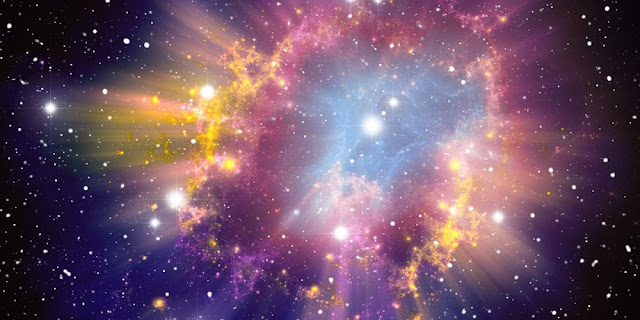One of the most extreme astrophysical events, supernova explosions are the violent deaths of certain stars that scatter elements heavier than hydrogen and helium into surrounding space. Our own solar system is thought to have formed when a nearby supernova exploded distributing these elements into a cloud of hydrogen that then condensed to form our sun and the planets. In fact, the very atoms that make up our bodies were formed in the remnants of such an explosion.
Working in collaboration with Imperial College, London, and AWE Aldermaston the team, led in Oxford by Professor Gianluca Gregori of the Department of Physics, are currently demonstrating their research at the Royal Society Summer Science Exhibition, a week-long showcase of cutting-edge science from across the UK.
Witnessing and getting to grips with these experiments can help people to understand the inner workings of the Universe. Their ‘How to make a supernova’ exhibit will highlight how lasers like Orion can help us understand and appreciate the origins of the universe.
The team were able to mimic some the properties of these supernovae in the laboratory by using the most powerful lasers on earth, such as the ORION laser at AWE. Each output pulse from the laser only lasts for a few billionths of a second, but, in that time, the power it generates is equivalent to the output of the electricity grid of the whole planet.
The extremes of density and temperature produced by the lasers allow scientists to study how the supernova acts when it expands into space, and can also provide insight into how high energy particles from space are produced, how the magnetic field in the galaxy formed, and what the interior of a giant planet might look like.
Dr Jena Meinecke, Junior Research Fellow at the University Oxford, said: ‘Lasers are so powerful today that we can actually recreate aspects of tiny supernovae that could fit in the palm of your hand! This allows us to answer fundamental questions such as 'What is the origin of magnetic fields in the universe?' Imagine the possibilities.
‘Our research is helping us better understand some of the most powerful natural processes known to humankind, and more importantly, the origins of our universe.’
Professor Justin Wark, Director of the Oxford Centre for High Energy Density Science (OxCHEDS), said: ‘The Royal Society Exhibition provides an excellent platform to tell the public about the exciting research that is going on in the field of laboratory astrophysics - in particular it is a great opportunity to enthuse young people, who will be the next generation of scientists.’
The ‘How to make a supernova’ research is on display at the Royal Society’s free annual Summer Science Exhibition until 9 July.

No comments:
Post a Comment